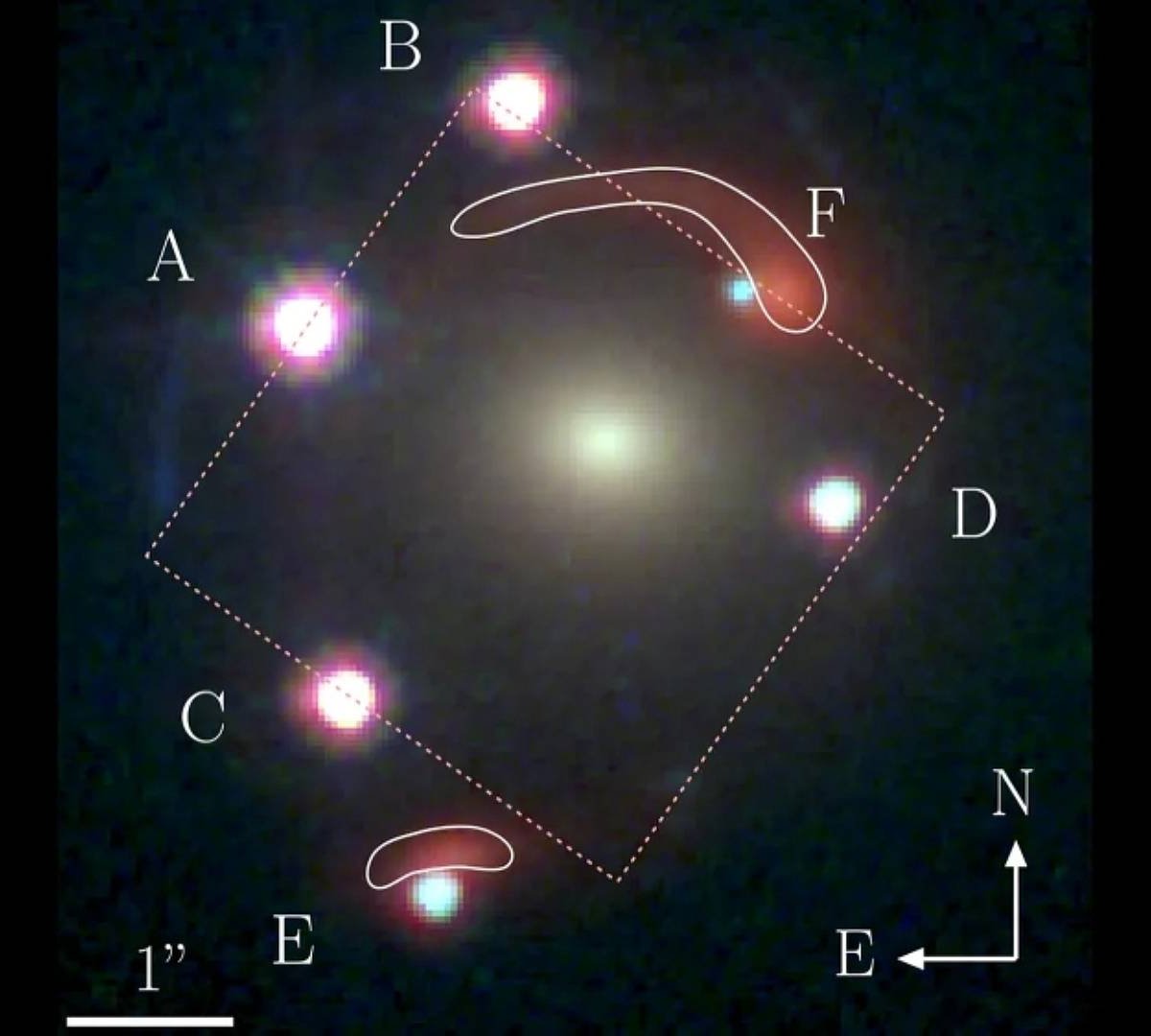Science was able to observe for the first time The phenomenon known as ‘Einstein’s zigzag’ is made possible by the effects of gravitational lensing in the region. According to a new study published in the preprint journal arXiv, a group of astronomers used the James Webb Space Telescope (JWST) to analyze a system consisting of two separate, perfectly aligned galaxies.
Although the effect has now been confirmed, Einstein had already suggested this possibility in 1915 with the gravitational lensing effect.. This phenomenon is called zigzagging because light from an object is distorted in space-time as it passes through two different regions.
The system, called J1721+8842, consists of a quasar and two galaxies that create a magnification effect. due to gravitational lensing. It is worth noting that the system was discovered recently, in 2018.
The region has been examined before and researchers tried to understand the six bright spots visible in the images. After reanalyzing the data from the last study, It has been suggested that all six lights are related to the quasar.
“I’m excited, not only because this is a fascinating natural phenomenon, but also because this system is incredibly promising for measuring cosmological parameters. This lens system offers the potential to impose tight constraints on both the Hubble constant and the energy equation of state.” “Darkness is something that is not usually possible,” co-author and Stanford University cosmologist Martin Millon said in a message to the Space website.
Einstein’s zigzag
Originally, scientists believed that the six bright spots came from different cosmic sources. However, after detailed analysis of the JWST data, they discovered that all the spots originate from a single quasar.. This is because the light is doubled due to the phenomenon of gravitational lensing caused by nearby galaxies.
These two perfectly aligned galaxies are responsible for the formation of the quasar’s six bright spots. The light pattern observed by scientists revealed a strange feature: The light passes from one side of the galaxy, then the other, and returns, creating a zigzag-like motion.
It’s worth remembering that the work has been posted to a preprint server, meaning it hasn’t been peer-reviewed yet. In each case, the team has already submitted the content for publication in the scientific journal Astronomy and Astrophysics.
“Normally, gravitational lensing created by a single galaxy creates two or four images of the background source, depending on the alignment. In this case, there is an extraordinary alignment between two galaxies and a background quasar, creating a rare six-image configuration,” adds Millon.
Did you like the content? So, stay up to date on more astronomy-related topics at TecMundo and take the opportunity to understand how the Einstein Ring suggests dark matter interacts with itself. Until next time!
Source: Tec Mundo
I’m Blaine Morgan, an experienced journalist and writer with over 8 years of experience in the tech industry. My expertise lies in writing about technology news and trends, covering everything from cutting-edge gadgets to emerging software developments. I’ve written for several leading publications including Gadget Onus where I am an author.












